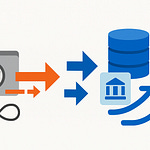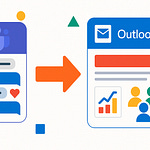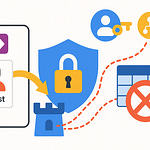Everyone says they love multi‑cloud—until the invoice arrives. The marketing slides promised agility and freedom. The billing portal delivered despair. You thought connecting Azure, AWS, and GCP would make your environment “resilient.” Instead, you’ve built a networking matryoshka doll—three layers of identical pipes, each pretending to be mission‑critical.
The truth is, your so‑called freedom is just complexity with better branding. You’re paying three providers for the privilege of moving the same gigabyte through three toll roads. And each insists the others are the problem.
Here’s what this video will do: expose where the hidden “multi‑cloud network tax” lives—in your latency, your architecture, and worst of all, your interconnect billing. The cure isn’t a shiny new service nobody’s tested. It’s understanding the physics—and the accounting—of data that crosses clouds. So let’s peel back the glossy marketing and watch what actually happens when Azure shakes hands with AWS and GCP.
Section 1 – How Multi‑Cloud Became a Religion
Multi‑cloud didn’t start as a scam. It began as a survival instinct. After years of being told “stick with one vendor,” companies woke up one morning terrified of lock‑in. The fear spread faster than a zero‑day exploit. Boards demanded “vendor neutrality.” Architects began drawing diagrams full of arrows between logos. Thus was born the doctrine of hybrid everything.
Executives adore the philosophy. It sounds responsible—diversified, risk‑aware, future‑proof. You tell investors you’re “cloud‑agnostic,” like someone bragging about not being tied down in a relationship. But under that independence statement is a complicated prenup: every cloud charges cross‑border alimony.
Each platform is its own sovereign nation. Azure loves private VNets and ExpressRoute; AWS insists on VPCs and Direct Connect; GCP calls theirs VPC too, just to confuse everyone, then changes the exchange rate on you. You could think of these networks as countries with different visa policies, currencies, and customs agents. Sure, they all use IP packets, but each stamps your passport differently and adds a “service fee.”
The “three passports problem” hits early. You spin up an app in Azure that needs to query a dataset in AWS and a backup bucket in GCP. You picture harmony; your network engineer pictures a migraine. Every request must leave one jurisdiction, pay export tax in egress charges, stand in a customs line at the interconnect, and be re‑inspected upon arrival. Repeat nightly if it’s automated.
Now, you might say, “But competition keeps costs down, right?” In theory. In practice, each provider optimizes its pricing to discourage leaving. Data ingress is free—who doesn’t like imports?—but data egress is highway robbery. Once your workload moves significant bytes out of any cloud, the other two hit you with identical tolls for “routing convenience.”
Here’s the best part—every CIO approves this grand multi‑cloud plan with champagne optimism. A few months later, the accountant quietly screams into a spreadsheet. The operational team starts seeing duplicate monitoring platforms, three separate incident dashboards, and a DNS federation setup that looks like abstract art. And yet, executives still talk about “best of breed,” while the engineers just rename error logs to “expected behavior.”
This is the religion of multi‑cloud. It demands faith—faith that more providers equal more stability, faith that your team can untangle three IAM hierarchies, and faith that the next audit won’t reveal triple billing for the same dataset. The creed goes: thou shalt not be dependent on one cloud, even if it means dependence on three others.
Why do smart companies fall for it? Leverage. Negotiation chips. If one provider raises prices, you threaten to move workloads. It’s a power play, but it ignores physics—moving terabytes across continents is not a threat; it’s a budgetary self‑immolation. You can’t bluff with latency.
Picture it: a data analytics pipeline spanning all three hyperscalers. Azure holds the ingestion logic, AWS handles machine learning, and GCP stores archives. It looks sophisticated enough to print on investor decks. But underneath that graphic sits a mesh of ExpressRoute, Direct Connect, and Cloud Interconnect circuits—each billing by distance, capacity, and cheerfully vague “port fees.”
Every extra gateway, every second provider monitoring tool, every overlapping CIDR range adds another line to the invoice and another failure vector. Multi‑cloud evolved from a strategy into superstition: if one cloud fails, at least another will charge us more to compensate.
Here’s what most people miss: redundancy is free inside a single cloud region across availability zones. The moment you cross clouds, redundancy becomes replication, and replication becomes debt—paid in dollars and milliseconds.
So yes, multi‑cloud offers theoretical freedom. But operationally, it’s the freedom to pay three ISPs, three security teams, and three accountants. We’ve covered why companies do it. Next, we’ll trace an actual packet’s journey between these digital borders and see precisely where that freedom turns into the tariff they don’t include in the keynote slides.
Section 2 – The Hidden Architecture of a Multi‑Cloud Handshake
When Azure talks to AWS, it’s not a polite digital handshake between equals. It’s more like two neighboring countries agreeing to connect highways—but one drives on the left, the other charges per axle, and both send you a surprise invoice for “administrative coordination.”
Here’s what actually happens. In Azure, your virtual network—the VNet—is bound to a single region. AWS uses a Virtual Private Cloud, or VPC, bound to its own region. GCP calls theirs a VPC too, as if a shared name could make them compatible. It cannot. Each one is a sovereign network space, guarded by its respective gateway devices and connected to its provider’s global backbone. To route data between them, you have to cross a neutral zone called a Point of Presence, or PoP. Picture an international airport where clouds trade packets instead of passengers.
Microsoft’s ExpressRoute, Amazon’s Direct Connect, and Google’s Cloud Interconnect all terminate at these PoPs—carrier‑neutral facilities owned by colocation providers like Equinix or Megaport. These are the fiber hotels of the internet, racks of routers stacked like bunk beds for global data. Traffic leaves Azure’s pristine backbone, enters a dusty hallway of cross‑connect cables, and then climbs aboard AWS’s network on the other side. You pay each landlord separately: one for Microsoft’s port, one for Amazon’s port, and one for the privilege of existing between them.
There’s no magic tunnel that silently merges networks. There’s only light—literal light—traveling through glass fibers, obeying physics while your budget evaporates. Each gigabyte takes the scenic route through bureaucracy and optics. Providers call it “private connectivity.” Accountants call it “billable.”
Think of the journey like shipping containers across three customs offices. Your Azure app wants to send data to an AWS service. At departure, Azure charges for egress—the export tariff. The data is inspected at the PoP, where interconnect partners charge “handling fees.” Then AWS greets it with free import, but only after you’ve paid everyone else. Multiply this by nightly sync jobs, analytics pipelines, and cross‑cloud API calls, and you’ve built a miniature global trade economy powered by metadata and invoices.
You do have options, allegedly. Option one: a site‑to‑site VPN. It’s cheap and quick—about as secure as taping two routers back‑to‑back and calling it enterprise connectivity. It tunnels through the public internet, wrapped in IPsec encryption, but you still rely on shared pathways where latency jitters like a caffeine addict. Speeds cap around a gigabit per second, assuming weather and whimsy cooperate. It’s good for backup or experimentation, terrible for production workloads that expect predictable throughput.
Option two: private interconnects like ExpressRoute and Direct Connect. Those give you deterministic performance at comically nondeterministic pricing. You’re renting physical ports at the PoP, provisioning circuits from multiple telecom carriers, and managing Microsoft‑ or Amazon‑side gateway resources just to create what feels like a glorified Ethernet cable. FastPath, the Azure feature that lets traffic bypass a gateway to cut latency, is a fine optimization—like removing a tollbooth from an otherwise expensive freeway. But it doesn’t erase the rest of the toll road.
Now layer in topology. A proper enterprise network uses a hub‑and‑spoke model. The hub contains your core resources, security appliances, and outbound routes. The spokes—individual VNets or VPCs—peer with the hub to gain access. Add multiple clouds, and each one now has its own hub. Connect these hubs together, and you stack delay upon delay, like nesting dolls again but made of routers. Every hop adds microseconds and management overhead. Engineers eventually build “super‑hubs” or “transit centers” to simplify routing, which sounds tidy until billing flows through it like water through a leaky pipe.
You can route through SD‑WAN overlays to mask the complexity, but that’s cosmetic surgery, not anatomy. The packets still travel the same geographic distance, bound by fiber realities. Electricity moves near the speed of light; invoices move at the speed of “end of month.”
Let’s not forget DNS. Every handshake assumes both clouds can resolve each other’s private names. Without consistent name resolution, TLS connections collapse in confusion. Engineers end up forwarding DNS across these circuits, juggling conditional forwarders and private zones like circus performers. You now have three authoritative sources of truth, each insisting it’s the main character.
And resilience—never a single connection. ExpressRoute circuits come in redundant pairs, but both live in the same PoP unless you pay extra for “Metro.” AWS offers Direct Connect locations in parallel data centers. To reach real redundancy, you buy circuits in entirely separate metro areas. Congratulations, your “failover” now spans geography, with corresponding cable fees, cross‑connect contracts, and the faint sound of your finance department crying quietly into a spreadsheet.
If one facility floods, the idea is that the backup circuit keeps traffic moving. But the speed of light doesn’t double just because you paid more. Physical distance introduces latency that your SLA can’t wish away. Light doesn’t teleport; it merely invoices you per kilometer.
So, when marketing promises “seamless multi‑cloud connectivity,” remember the invisible co‑signers: Equinix for the meet‑me point, fiber carriers for the cross‑connects, and each cloud for its own ingress management. You’re effectively running a three‑party border patrol, charged per packet inspected.
FastPath and similar features are minor relief—painkillers for architectural headaches. They might shave a millisecond, but they won’t remove the customs gate between clouds. The only guaranteed way to avoid the hidden friction is to keep the data where it naturally belongs: close to its compute and away from corporate tourism roads.
So yes, the handshakes work. Azure can talk to AWS. AWS can chat with GCP. They even smile for the diagram. But under that cartoon clasp of friendship lies an ecosystem of routers, meet‑me cages, SLA clauses, and rental fibers—all billing by the byte. You haven’t built a bridge; you’ve built a tollway maintained by three competing governments.
Technical clarity achieved. Now that we’ve traced the packet’s pilgrimage, let’s turn the microscope on your wallet and see the anatomy of the network tax itself—the part no one mentions during migration planning but everyone notices by quarter’s end.
Section 3 – The Anatomy of the Network Tax
Let’s dissect this supposedly “strategic” architecture and see where the money actually bleeds out. Multi‑cloud networking isn’t a single cost. It’s a layered tax system wrapped in fiber optics and optimism. Three layers dominate: the transit tolls, the architectural overhead, and the latency tax. Each one is invisible until the invoice proves otherwise.
First, the transit tolls—the price of movement itself. Every time data exits one cloud, it pays an egress charge. Think of it as exporting goods: Azure levies export duty; AWS and GCP cheerfully accept imports for free, because who doesn’t want your bytes arriving? But that act of generosity ends the second you send data back the other way, when they become the exporter. In a cyclical sync scenario, you’re essentially paying an international trade tariff in both directions.
Now, include the middlemen. When Azure’s ExpressRoute meets AWS’s Direct Connect at a shared Point of Presence, that facility charges for cross‑connect ports—hundreds of dollars per month for two fibers that merely touch. The providers, naturally, sell these as “private dedicated connections,” as if privacy and dedication justify compound billing. Multiply that by three clouds and two regions and you now own six versions of the same invoice written in different dialects.
That’s only the base layer. Above it sits the architectural overhead—the tax of needing glue everywhere. Each cloud demands a unique gateway appliance to terminate those private circuits. You’ll replicate monitoring appliances, routing tables, security policies, and firewalls because nothing is truly federated. If you thought “central management console” meant integration, you’re adorable. They share nothing but your exasperation.
It’s not just hardware duplication; it’s human duplication. An engineer fluent in Azure networking jargon speaks a different dialect from an AWS architect. Both faint slightly when forced to troubleshoot GCP’s peering logic. Every outage requires a trilingual conference call. Nobody knows who owns the packet loss, but everyone knows who’ll approve the consultant retainer.
Add to that operational divergence. Each platform logs differently, bills differently, measures differently. To get unified telemetry, you stitch together three APIs, normalize metrics, and maintain extra storage to hold the copied log data. You’re literally paying one cloud to watch another. The governance overhead becomes its own platform—sometimes requiring extra licensing just to visualize inefficiency.
Then comes the latency tax—the subtle one, paid in performance. Remember: distance equals delay. Even if both circuits are private and both regions are theoretically “London,” the packets travel through physical buildings that might be miles apart. A handful of milliseconds per hop sounds trivial until your analytics pipeline executes a thousand database calls per minute. Suddenly, “resilient multi‑cloud” feels like sending requests via carrier pigeon between skyscrapers.
To compensate for those tiny pauses, architects overprovision bandwidth and compute. They build bigger gateways, spin up larger VM sizes, extend message queues, cache data in triplicate, and replicate entire databases so nobody waits. Overprovisioning is the IT equivalent of turning up the volume to hear through static—it helps, but it’s still noise. The cost of that extra capacity quietly becomes the largest line item of all.
You might think automation softens the blow. After all, Infrastructure‑as‑Code can deploy and tear down resources predictably. Sadly, predictable waste is still waste. Whenever your Terraform or Bicep template declares a new interconnect, it also declares a new subscription of recurring charges. Scripts can’t discern whether you need the link; they just obediently create it because a compliance policy says “redundant path required.”
And redundancy—what a loaded word. Two circuits are good. One circuit is suicidal. So most enterprises buy dual links per provider. In the tri‑cloud scenario, that’s six primary circuits plus six backups. Each link has a monthly minimum even when idle, because fiber doesn’t care that your workload sleeps at night. Engineers call it fault tolerance; finance calls it self‑inflicted extortion.
Let’s quantify it with an example. Suppose you’re syncing a modest one‑gigabyte dataset across Azure, AWS, and GCP every night for reporting. Outbound from Azure: egress fee. Inbound to AWS: free. AWS back to GCP: another egress fee. Now triple that volume for logs, backups, and health telemetry. What looked like a small nightly routine becomes a steady hemorrhage—three copies of the same data encircling the globe like confused tourists collecting stamps.
But the real expense lurks in staff time. Network engineers spend hours cross‑referencing CIDR ranges to avoid IP overlap. When subnets inevitably collide, they invent translation gateways or NAT layers that complicate everything further. DNS becomes a diplomatic crisis: which cloud resolves the master record, and which one obeys? One typo in a conditional forwarder can trap packets in recursive purgatory for days.
Each of these tiny misalignments triggers firefighting. Investigations cross time zones, credentials, and user interfaces. By the time someone identifies the root cause—perhaps a misadvertised BGP route at a PoP—you’ve paid several cloud‑hours of human labor and machine downtime. No dashboard tells you this portion of the bill; it hides in wages and sleep deprivation.
Occasionally, there’s an exception worth noting: the Azure‑to‑Oracle Cloud Interconnect. Those two companies picked geographically adjacent facilities and coordinated their routing so latency stays under two milliseconds. It’s efficient precisely because it respects physics—short distance, short delay. Geography, it turns out, is still undefeated. Every other cloud matchup is less fortunate. You can’t optimize distance with configuration files; only with geography and cold fiber. And no, blockchain can’t fix that.
This brings us to the cognitive cost—the behavioral decay that sets in when environments grow opaque. Teams stop questioning circuit purpose. Nobody knows whether half the ExpressRoute pipes still carry traffic, but shutting them off feels risky, so they stay on autopay. Documentation diverges from reality. At that point, the network tax mutates into cultural debt: fear of touching anything because the wiring diagram has become holy scripture.
In theory, firms justify all this as “cost of doing business in a global landscape.” In practice, it’s a lobbying fee to maintain illusions of independence. The most expensive byte in the world is the one that crosses a cloud boundary unnecessarily.
So whether you’re connecting through VPNs jittering across the public internet or through metropolitan dark fiber stitched between glass cages, the math remains identical. You pay once for hardware, again for management, again for distance, and infinitely for confusion. The network tax is not a single bill—it’s an ecosystem of micro‑fees and macro‑anxiety sustained by your unwillingness to simplify.
Having sliced open the patient and counted every artery of cost, the diagnosis is clear: multi‑cloud’s circulatory system is healthy only in PowerPoint. In real life, it bleeds constantly in latency and accounting entries. But this disease is treatable. Next, we’ll prescribe three strategies to stop overpaying and maybe even reclaim a few brain cells from your current hybrid hydra.
Section 4 – Three Ways to Stop Overpaying
Congratulations—you’ve officially identified the leak. Now let’s talk about plugging it. There’s no silver bullet, just disciplined design. Three strategies can keep your circuitry sane: pick a primary cloud, use shared services instead of data migrations, and colocate smartly when you can’t avoid multicloud at all.
First, pick a primary cloud. I know, the multicloud evangelists will gasp, but every architecture needs a center of gravity. Data has mass, and the larger it grows, the more expensive it becomes to move. So decide where your data lives—not just where it visits. That’s your primary cloud. Everything else should orbit it briefly and reluctantly.
Azure often ends up the logical hub for enterprises already standardized on Microsoft 365 or Power Platform. Keep your analytics, governance, and identity there; burst to other clouds only for special tasks—a training run on AWS SageMaker, a GCP AI service that does one thing exceptionally well. Pull the results back home, close the circuit, and shut the door behind it.
Each byte that stays put is one less toll event. Consolidating gravity isn’t surrender; it’s strategy. Too many organizations are proud of “cloud neutrality” while ignoring that neutrality is friction. By claiming a home cloud, you reduce every other provider to an extension instead of an equal. Equality might be politically correct; in networking, hierarchy is efficient.
Second, use shared services instead of transfers. Stop throwing files across clouds like digital Frisbees. Wherever possible, consume APIs rather than export datasets. If AWS hosts an analytics engine but your native environment is Azure, run the compute there but expose the results through an API endpoint. You’ll move micrograms of metadata instead of gigabytes of payload.
This principle annihilates redundant storage. Instead of replicating entire data lakes in three places, use shared SaaS services or integration layers that talk securely over managed endpoints. It’s like letting each roommate borrow a spoon instead of installing three separate kitchens. The less duplication, the fewer sync jobs, and the smaller your egress bill.
SaaS already pioneers this behavior. When your Power BI workspace queries data hosted in an external cloud, the query itself travels, not the table. The compute execution happens near the storage, and only the aggregated result flows back. That’s distributed efficiency—a small payload with big insight. When you design your own workloads, emulate that: compute near the storage, transport conclusions, not raw material.
Of course, you’ll still need visibility across environments. That’s where governance aggregation comes in. Use something like Azure Arc to federate policies, monitoring, and resource inventory across clouds. Arc doesn’t eliminate interconnects; it just manages them so you can see which ones deserve to die. Third‑party multi‑fabric controllers from vendors like VMware or Cisco can also help, but beware of creating another abstraction layer that bills just to watch others bill. The goal is consolidation, not meta‑complexity.
Third, colocate smartly. If multi‑cloud is unavoidable—say, regulatory, contractual, or sheer executive stubbornness—then put your clouds in the same physical neighborhood. Literally. Choose regions that share the same metro area and connect through the same carrier‑neutral facility. Equinix, Megaport, and similar providers run these meet‑me data centers where Azure’s ExpressRoute cages sit just meters away from AWS Direct Connect routers.
The closer the cages, the cheaper the latency. Geography is destiny. By strategically selecting colocations, you can shave milliseconds and thousands of dollars simultaneously. Don’t let marketing pick regions based on poetic names (“West Europe sounds fancy!”) when physics only cares about kilometers. One poorly chosen pairing—say, Azure Frankfurt talking to AWS Dublin—can doom an architecture to permanent sluggishness and inflated costs.
Colocation also simplifies redundancy. Two circuits into different PoPs within the same city achieve more resilience per dollar than one heroic transcontinental link. Remember: two circuits good, one circuit suicidal. Dual presence isn’t paranoia; it’s hygiene. Use active/active routing where possible, not because uptime charts demand it but because your sanity will.
Now, before you install yet another management gateway, think governance again. Centralized monitoring through Arc or integrated Network Watchers can display throughput across providers in one console. Dashboards can’t remove costs, but they can illuminate patterns—underused circuits, asymmetric flow, pointless syncs. Shine light, then wield scissors. Cutting redundant links is the purest optimization of all: deletion.
These three approaches share one philosophy: gravity over glamour. Stop treating clouds as equal partners in a polyamorous relationship. Pick your main, keep the others as occasional collaborators, and limit cross‑cloud flirtation to brief, API‑based encounters. When architecture respects physics, invoices stop reflecting fantasy.
You’ve applied first aid—now for long‑term therapy. The next section deals less with cabling and more with psychology: the mindset that mistakes redundancy for resilience.
Section 5 – The Philosophy of Consolidation
Let’s be honest: most multicloud strategies are ego management disguised as engineering. Executives want to say, “We run across all major platforms,” like bragging about owning three sports cars but commuting by bus. True resilience isn’t proliferation; it’s robustness within boundaries.
Resilience means your workloads survive internal failures. Redundancy means you pay multiple vendors to fail independently. One is strategy, the other is expense disguised as virtue. Modern clouds already build resilience into regions via availability zones—separate power, cooling, and network domains meant to withstand localized chaos. That’s redundancy inside unity. Stretching architecture across providers adds nothing but bureaucracy.
Your data doesn’t care about brand diversity. It cares about round‑trip time. Every millisecond added between storage and compute is a tax on productivity. Imagine if your local SSD demanded a handshake with another vendor before every read—it would be insanity. Cross‑cloud design is that insanity at corporate scale.
So reframe “multi‑cloud freedom” for what it is: distributed anxiety. Three sets of consoles, credentials, and compliance rules, each offering fresh opportunities for mistakes. Resilience shouldn’t feel like juggling; it should feel like stability. You get that not from more clouds, but from better architecture within one.
The ultimate test is philosophical: are you building for continuity or reputation? If your answer involves multiple public logos, you’ve chosen marketing over math. A single‑cloud architecture, properly zoned and monitored, can survive hardware failure, software bugs, even regional outages—with better performance and far fewer accountants on standby.
Think of your clouds as roommates. You split rent for one apartment—that’s your region—but each insists on installing their own kitchen, fridge, and Wi‑Fi. Technically, you all cook dinner. Financially, you’re paying triple utilities for identical spaghetti. Consolidation is the grown‑up move: one shared kitchen, one shared plan, fewer burned meals.
So the philosophy is simple: complexity isn’t safety; it’s procrastination. Every redundant circuit is a comfort blanket for executives scared of commitment. Commit. Choose a home cloud, design resilience within it, and sleep better knowing your infrastructure isn’t moonlighting as a global diplomatic experiment.










